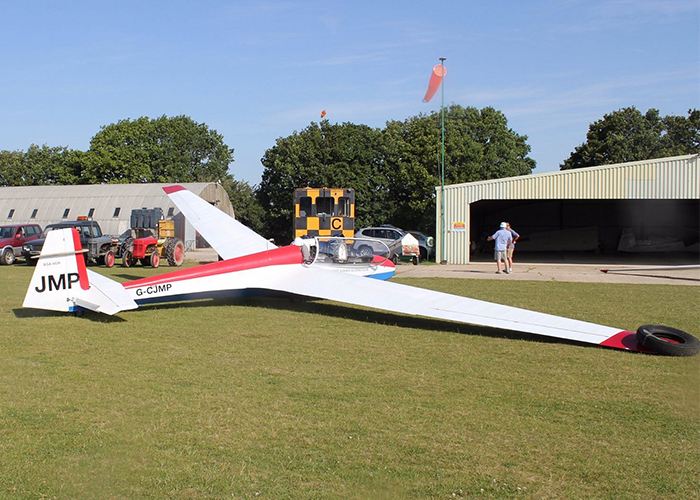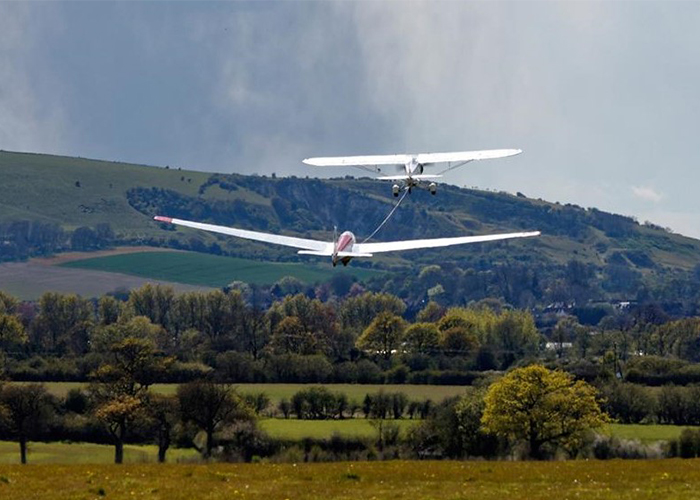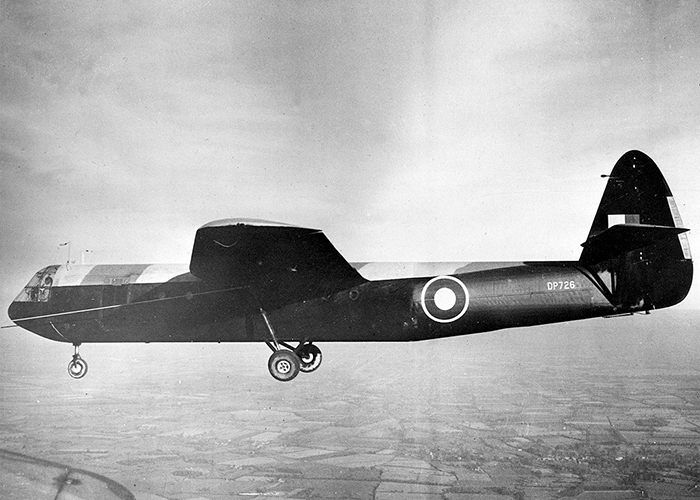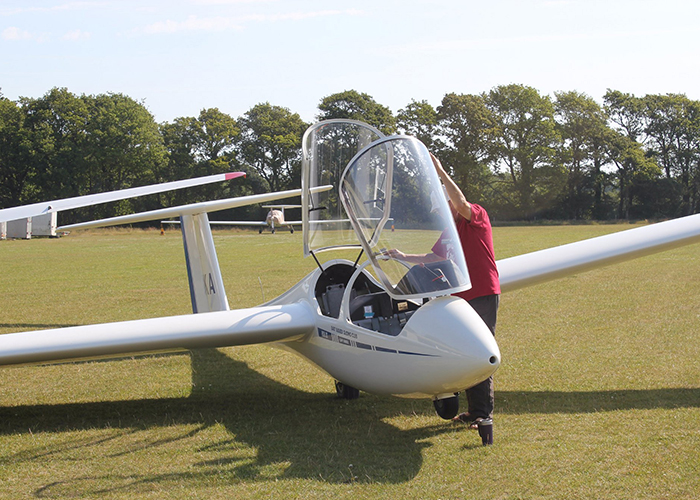

 TERRY SMITH looks at the unpowered aircraft in our skies.
TERRY SMITH looks at the unpowered aircraft in our skies.

A typical modern-day glider or sailplane seen at the East Sussex Gliding Club, Ringmer.
Apart from taking over the controls and flying friends’ aircraft, I have over the last 15 years had a few official Flying lessons in a rather eclectic mix of aircraft. Most of my hours have been in a Piper PA28, although I have also flown a PA38 in which I made my first landing, plus a couple of very enjoyable hour-long flights in a Tiger Moth and a T6 Harvard, but I must confess I have never been up in a glider.

Here a glider is being towed into the sky. Plenty of thermals can be found around the area of the South Downs just a few miles from the airfield.
The concept of flying without an engine has never really appealed to me, well not until recently. This came about when I was watching Gliders being hauled into the air and flying silently above the countryside from the East Sussex Gliding Club near Ringer near Lewes. Gliders or sailplanes, use naturally occurring currents of rising air in the atmosphere, known as thermals, to remain airborne. As long as there are enough of the right conditions, a glider can keep in the air for many hours, of unpowered flight.

This is an Airspeed Horsa, as used in the Normandy landings of 1944. This large glider is yet to get its invasion stripes added, which it carried on D-Day.
The World Record for the longest glider flight is an incredible 56 hours and 15 minutes, set in France in 1952 by Charles Atger. The sport of gliding first started in the 1920’s but by D-Day huge gliders were being put to use as troop carriers by the Allied forces as they fought to re-take France.

Gliders are very narrow to aid the aerodynamics. In twin seat versions, the seats are placed in-line to keep the fuselage as slim as possible. What are they like to fly? Hopefully soon, I can tell you!
At this club there are two options of getting airborne, one is by a fast-moving winch which is ideal for trail to see if you like it, or by being towed into the sky by another aircraft. If you choose the latter it will take you much higher than the winch releasing you at up to 3000ft. Gliding is apparently a wonderfully peaceful form of flying, and with no engine, all you hear is the wind. Also, you can even have a conversation with the person flying with you without the need for an aviation headset. It’s a basic natural form of flying, one that necessitates an awareness of the air around you and careful judgement. It’s said that people who glide are better pilots for this reason! Of course, being unpowered there are new things to learn about the way you fly, and it is something I want to investigate doing as the weather gets warmer and the evenings longer.

A glider and a powered sailplane along with a twin engine aircraft feature in our GM443 Airfield Planes and Gliders Kit which is part of our Fordhampton Airfield range of related plastic kits.